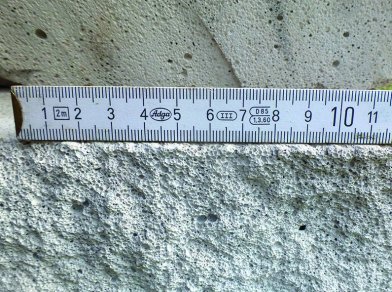- Home
- My services
- My home
- My community
- About Us
- News
- Contact us
- Accessibility information
raac
Information on RAAC (Reinforced Autoclaved Aerated Concrete)

What is RAAC?
Reinforced Autoclaved Aerated Concrete (RAAC) is a lightweight, porous building material that was popular in the UK from the mid-20th century to the early 1990s. It was often used in the construction of public buildings, such as schools and hospitals.
RAAC is distinct from traditional concrete in its structure. It is aerated, meaning it contains tiny air pockets that make it lighter and easier to work with. However, this also makes it less durable.
While RAAC offered advantages in terms of speed of production, installation, and cost, its susceptibility to deterioration has led to concerns about its use in critical structures.
What is the risk?
RAAC is vulnerable to moisture-related damage. The porous nature of the material allows water to penetrate, potentially leading to the corrosion of any reinforcing steel within it. In extreme and rare cases, this can result in unexpected structural failure.
Following incidents in England in 2018 and 2019, the Institute of Structural Engineers RAAC Group released a comprehensive report in February 2022. This report provided valuable insights and recommendations for managing the risks associated with RAAC. In April 2023, the group published further guidance to assist building owners and professionals in identifying, assessing, and mitigating RAAC-related hazards.
In an effort to assess the prevalence of RAAC in domestic buildings, the Scottish Housing Regulator, in collaboration with the Scottish Government, requires landlords to report the number of properties confirmed to contain RAAC and those undergoing investigation.
Although RAAC has been identified as a potential concern for some time, a building containing RAAC is not inherently unsafe. However, neglect or improper maintenance can lead to deterioration, including warping and deflection, especially if moisture is allowed to penetrate.
What action has River Clyde Homes taken to date?
River Clyde Homes have conducted thorough surveys and inspections to identify buildings in our housing stock that are suspected of having used RAAC in their construction.
These inspections involve both visual assessments and invasive surveys, providing a comprehensive understanding of the material's distribution and condition. River Clyde Homes is currently working with independent structural engineers to determine the necessary steps to ensure the structural integrity of the affected properties.
The wellbeing of our tenants is our top priority, and we are committed to taking all necessary measures to ensure the continued safety of our residents.
What buildings are affected across River Clyde Homes housing stock?
- River Clyde Homes can confirm that an extensive survey of our housing stock has revealed the presence of Reinforced Autoclaved Aerated Concrete (RAAC) as being identified in a very small percentage of our properties.
READ MORE IN OUR CUSTOMER INFORMATION LEAFLET
RAAC In Housing Leadership Group - 4th September 2025
The inaugural meeting of the RAAC in Housing Leadership Group was held on 4 September 2025, bringing together senior representatives from the Scottish Government, local authorities, and Registered Social Landlords (RSLs) to address issues related to Reinforced Autoclaved Aerated Concrete (RAAC) in residential properties.
The Cabinet Secretary for Housing, Mairi McAllan MSP, set out the purpose of the group: to facilitate the sharing of knowledge, concerns, and best practice, and to focus on solutions, recognising that all areas are at different stages of remediation.
Attendees were told that the Terms of Reference would be circulated for comment after the meeting.
Further information:
Scottish Government - RAAC in Social Housing
Scottish Government – RAAC Cross Sector Working Group
Scottish Housing Regulator – Update on RAAC
 01475 788887
01475 788887
